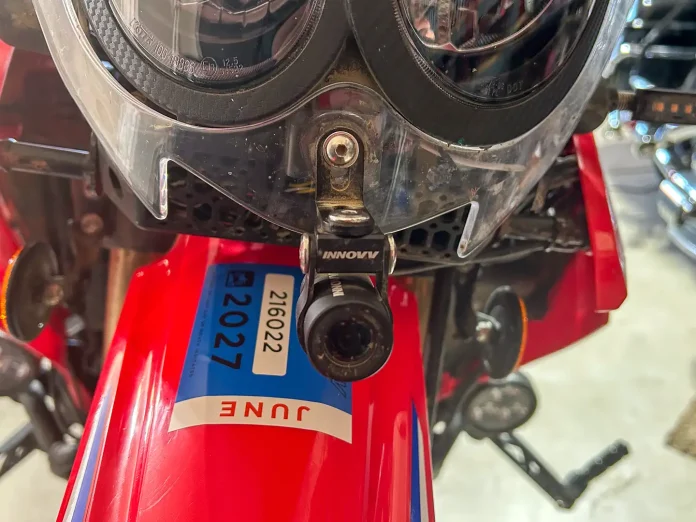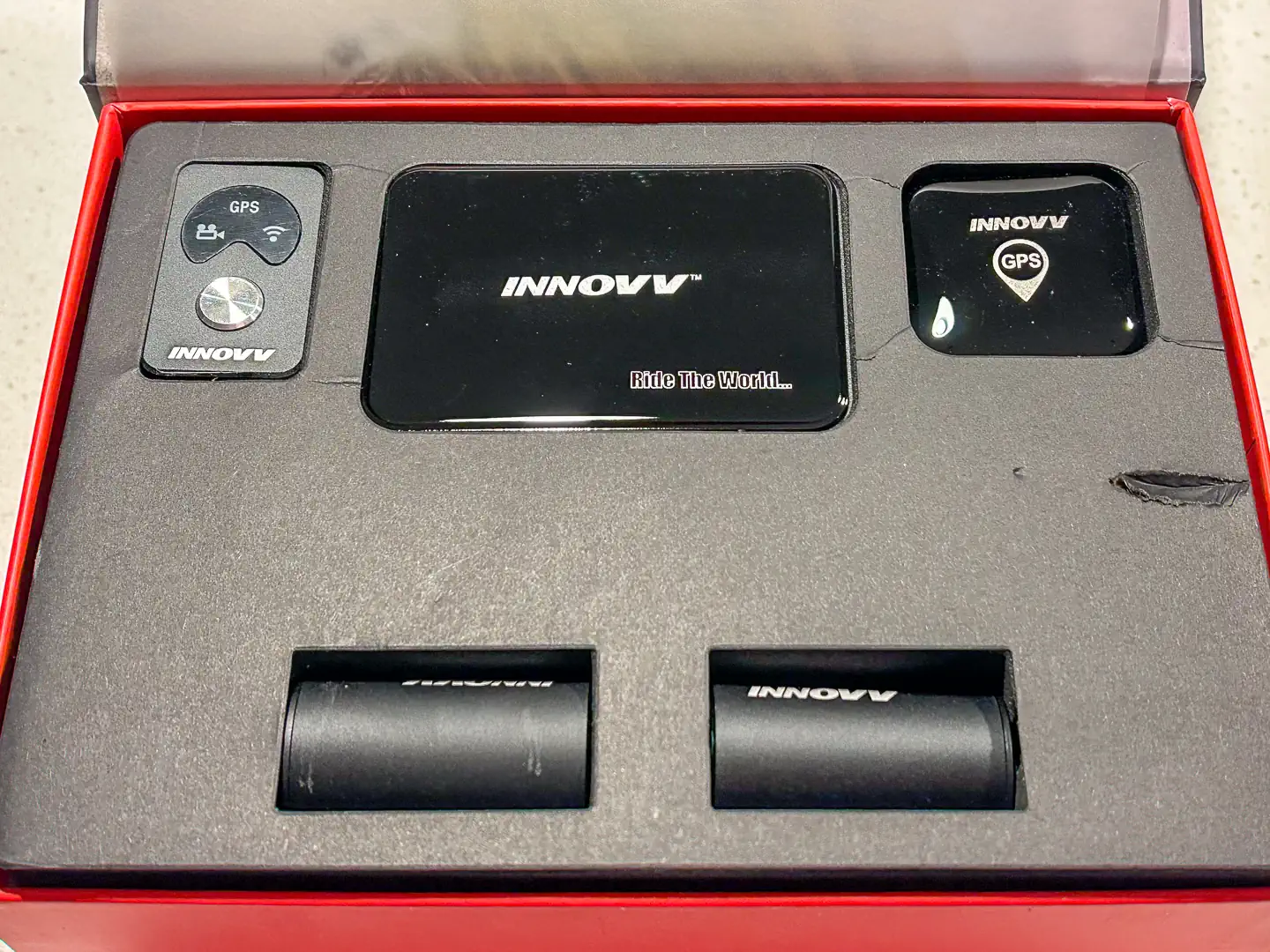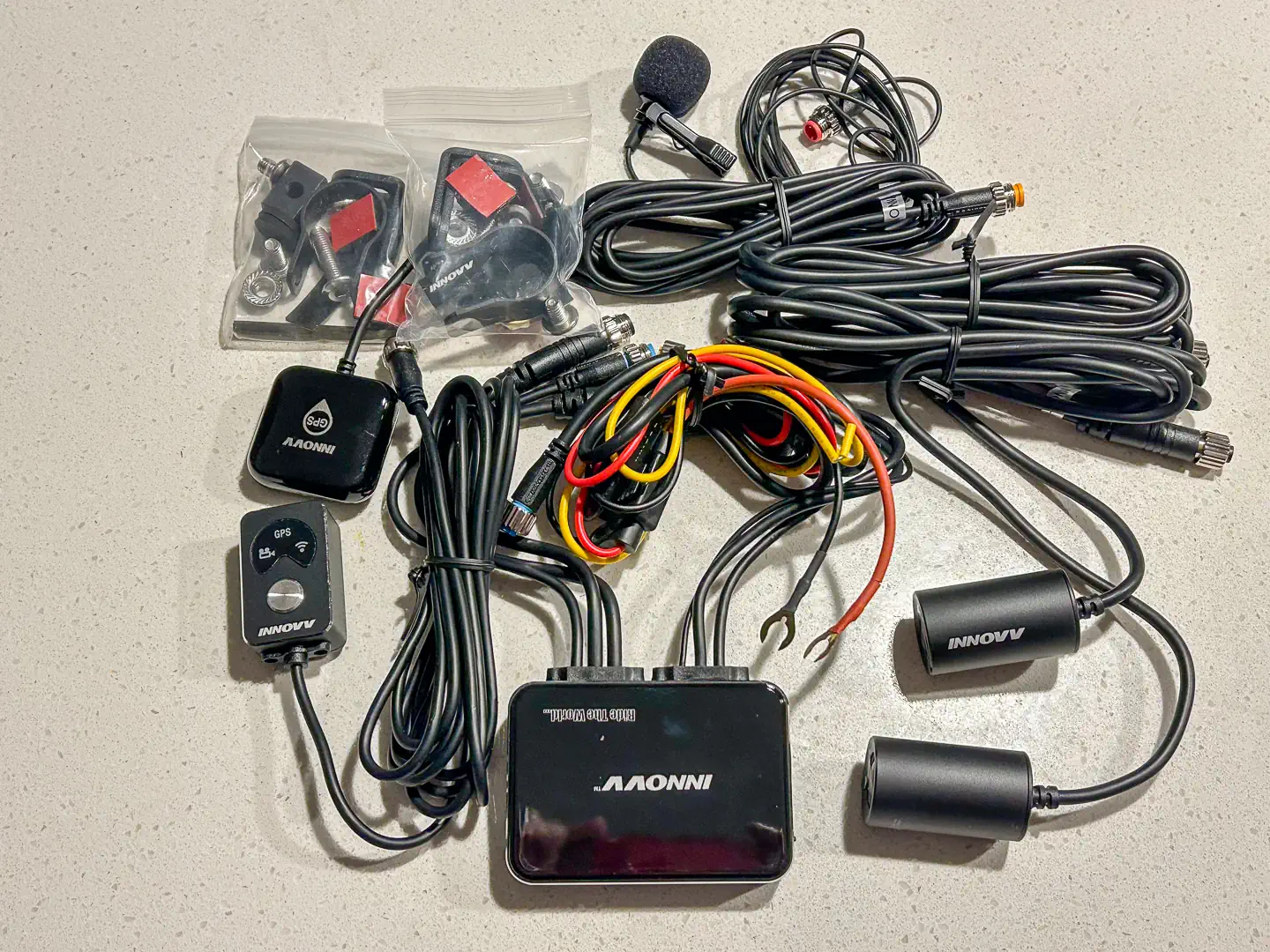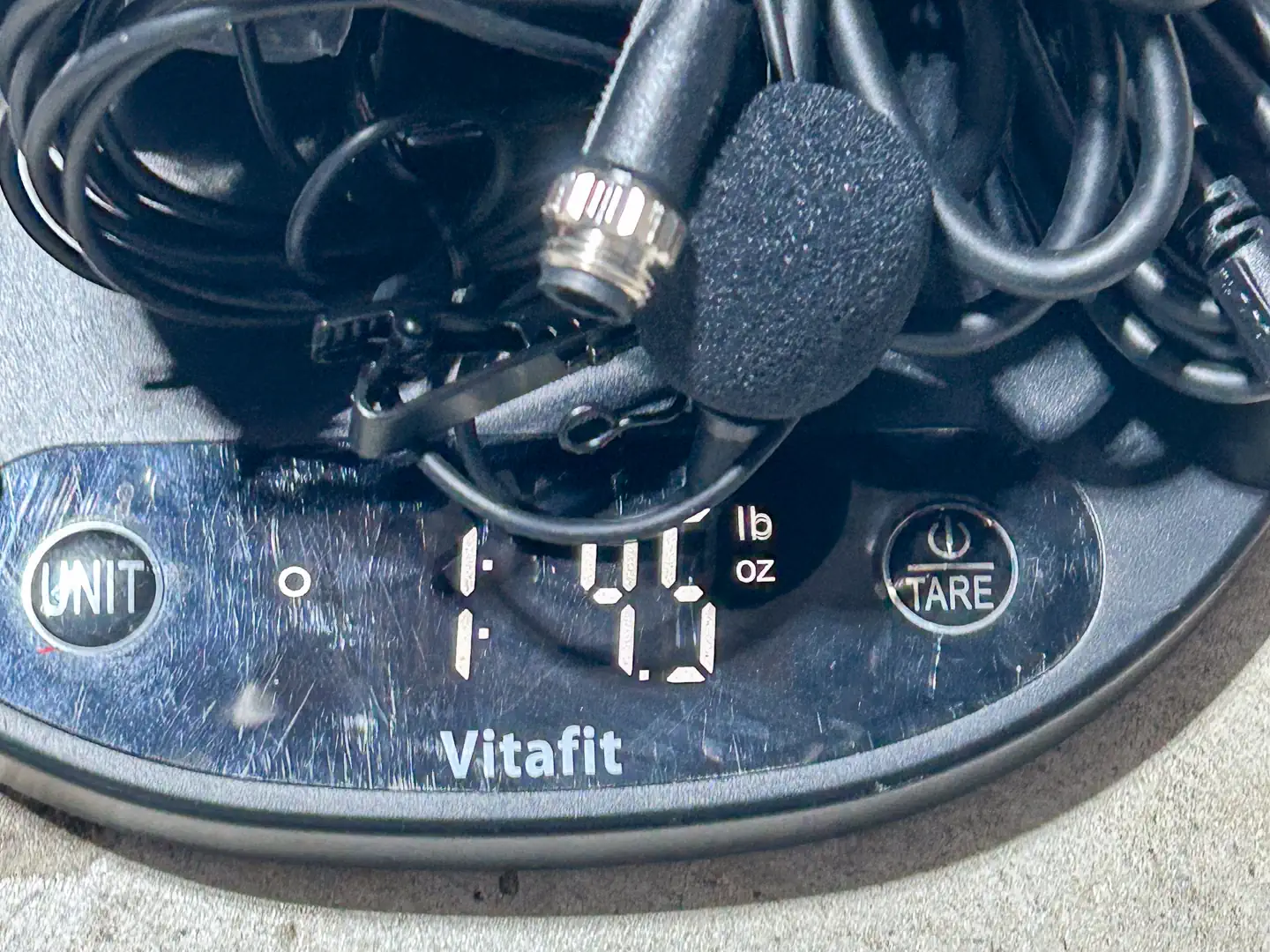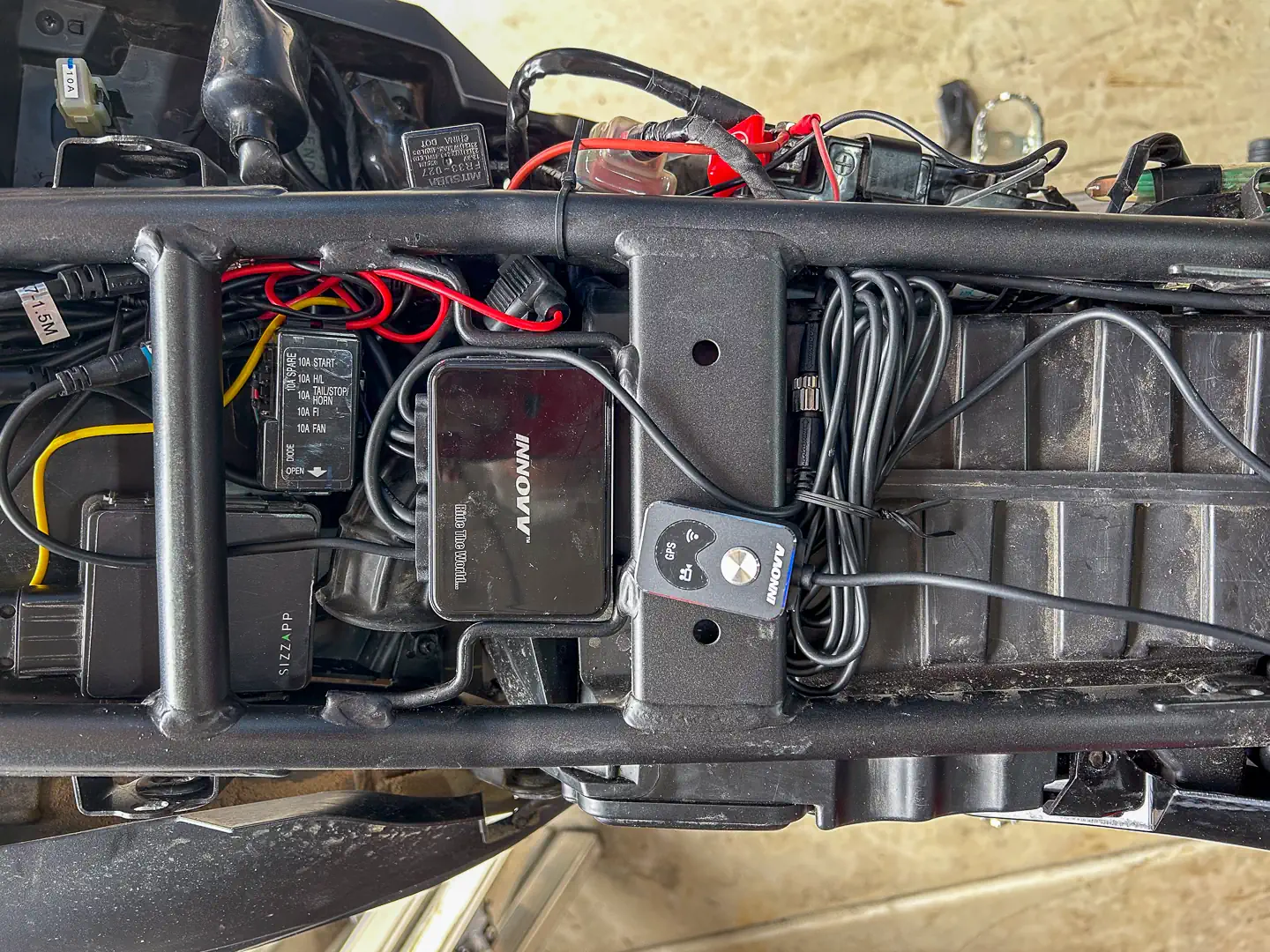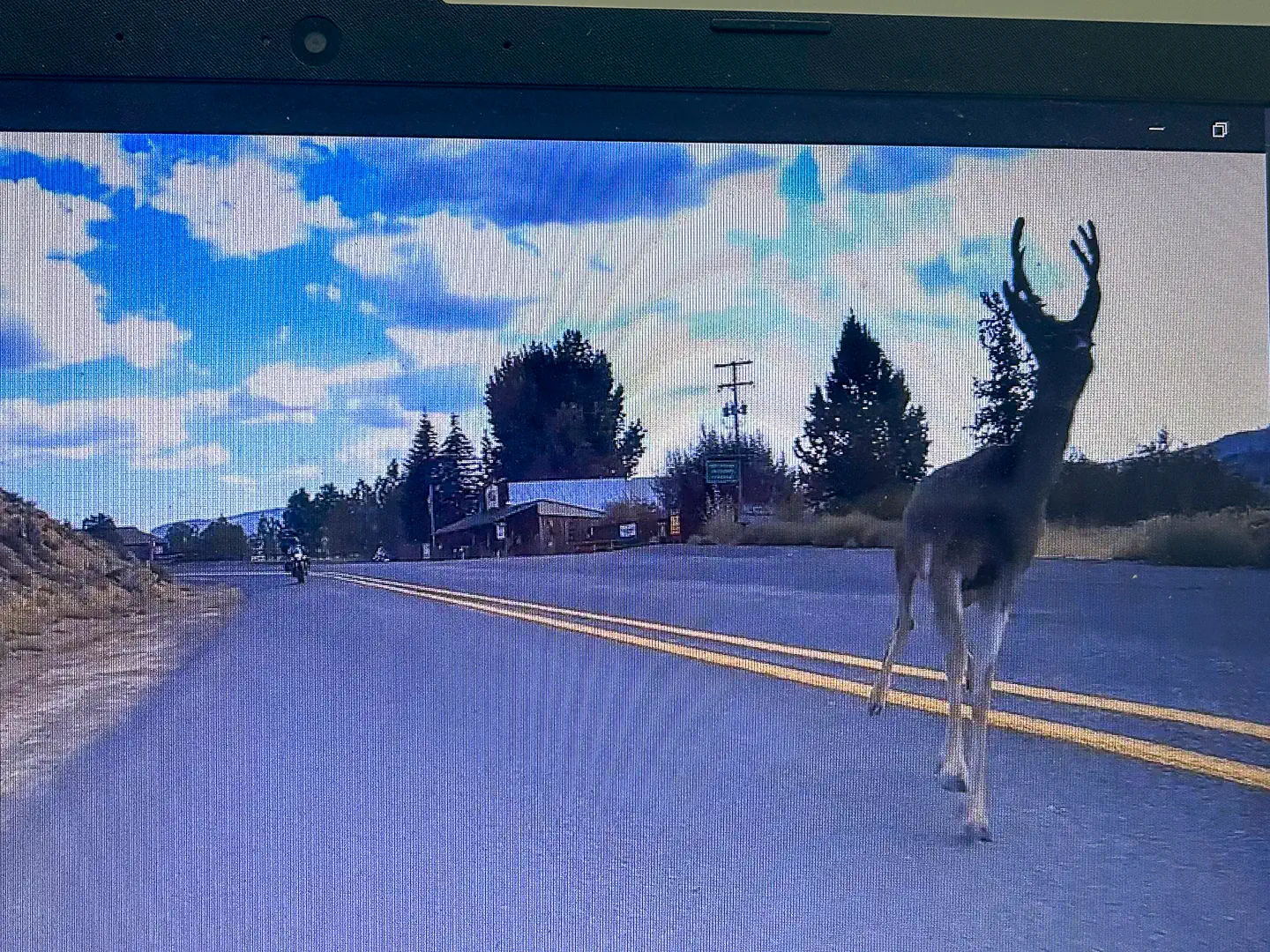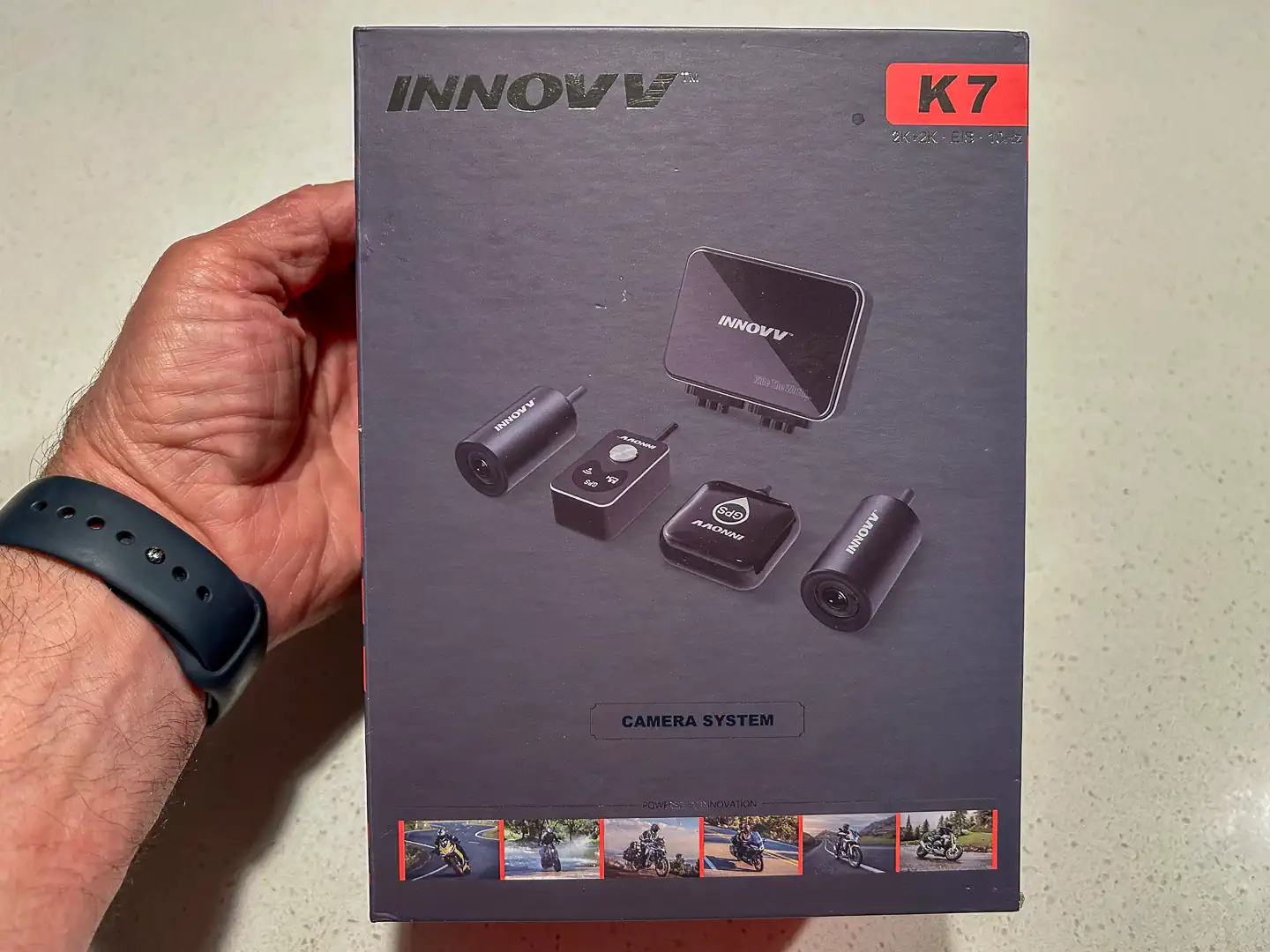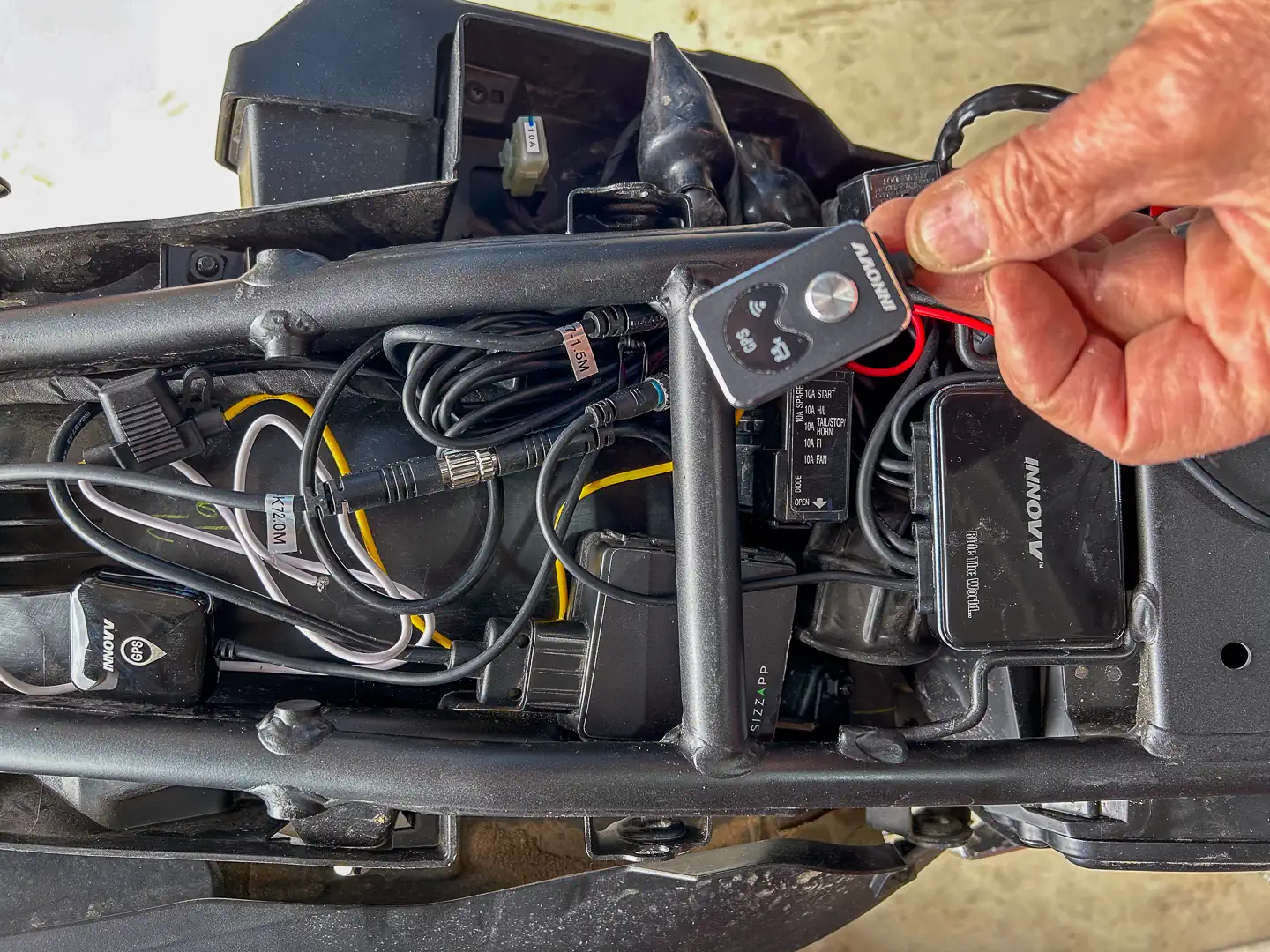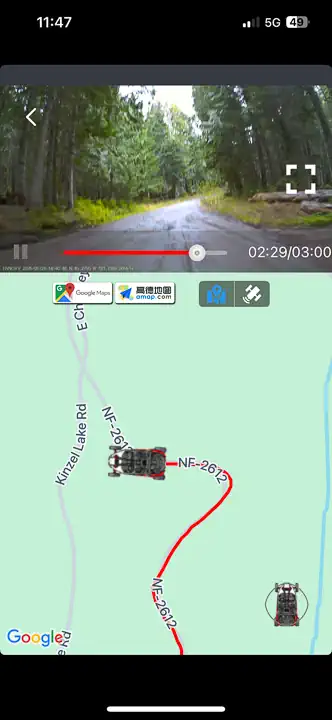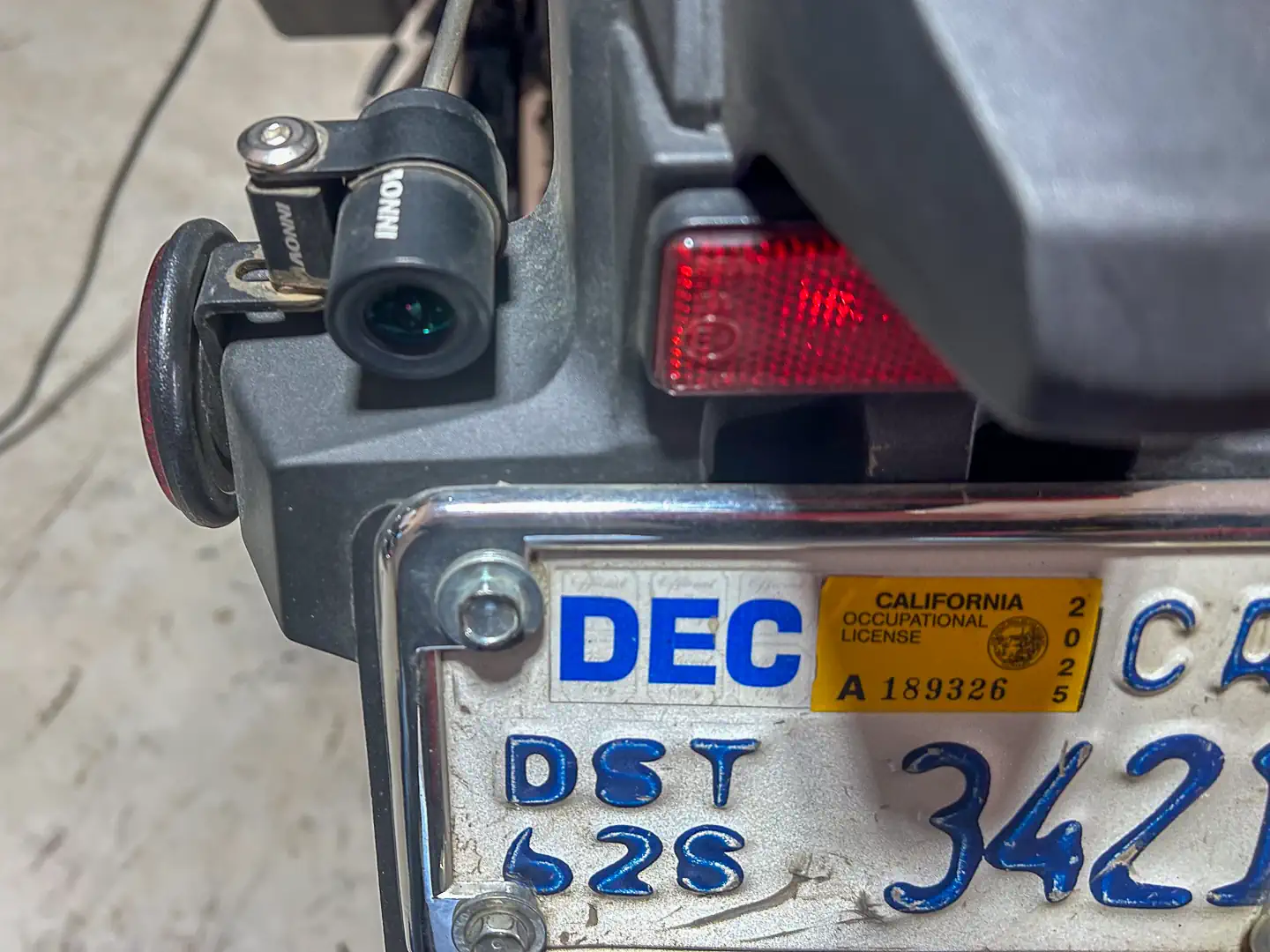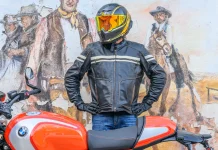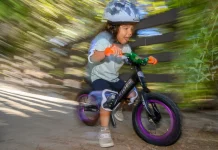Innovv introduced its first dual-channel, GPS-enhanced motorcycle dashcam 10 years ago and has been refining its products ever since. The company maintains local warehouses in the US, Canada, and the EU, while Australia and New Zealand are served by exclusive distributors. Other countries receive direct support from Innovv headquarters in Huizhou City, China. Two years ago, I reviewed the Innovv H5 helmet cam, and on my first ride with it, I captured the closest I ever want to get to a T-bone. The quality and ease of use of the H5 led me to install the Innovv K7 dual-2K Motorcycle Dash Cam on the Ultimate Motorcycling Honda CRF300L Rally project bike.
The feature-rich Innovv K7 has an MSRP of $389. Both front and rear cameras record in 2K at 30 fps or 1080p at 30/60 fps. The control unit has built-in dual-band Wi-Fi and supports microSD cards up to 512GB. It includes all necessary mounting hardware, a microphone, a GPS receiver, and a remote control switch.
Planning the mounting locations for the front and rear cameras and routing the cables took longer than the installation itself. All of the wires are color-coded and attach securely to the control unit pigtails with twist connectors. The setup weighs 20.5 ounces, and the waterproof IP67-rated control unit fits neatly in unused space under most motorcycle seats. I powered the system through a HealTech Thunderbox and placed the microphone and remote control under the seat, as I have no need to manually start or stop recording.
After selecting your resolution, parking mode, and other settings in the phone app, the Innovv K7 automatically records when you start the bike and stops when you shut it down. If you enable Parking Mode, it records when the bike is off and detects movement above a preset g-force level. Because I ride off-road often, the system frequently mistakes bumps for impacts, saving clips in the protected folder. When I first reviewed the recording, I found random videos missing. Innovv support explained that they were stored in that protected folder and suggested disabling g-force monitoring in the setup menu.
While I am confident Innovv didn’t design the K7 Dash Cam specifically for off-road riding, it does a decent job smoothing bumps with its built-in image stabilization. My front camera is mounted just under the headlight using the center bolt of the SRC Moto headlight guard, and the rear camera sits beside the license plate. On rocky terrain, the recording shows plenty of bounce, but on asphalt, playback is stable, with accurate white balance and solid low-light performance.
I also run an Insta360 X5 for action shots, but I can always count on the Innovv K7 to be recording. A few weeks ago, a deer darted into the road beside me—the front camera caught its entrance, and the rear camera captured it falling behind.
Although running the K7 Dash Cam on a small adventure bike isn’t the setup Innovv envisioned, it performs exactly how I need it to—continuously recording my surroundings on and off pavement. It powers up automatically, loops footage, and shuts off when the bike does. I never have to remember to record or worry about memory limits. Image quality varies with vibration, but the Sony Starvis IMX335 sensor delivers impressive resolution for its price point.
There are two ways to view the recorded video. The iPhone or Android app will access the memory on the control unit via an internal Wi-Fi broadcast and allow you to select the video for playback. You can view it from the controller memory or download it to your phone. You can also pull the microSD card and slide it into your computer for viewing.
There is a cool feature in the app that shows a split-screen view of the front camera and your location on a moving map. Innovv advises that this split-screen playback is only available for live playback, though there may be 3rd-party apps that offer this capability.
The Innovv K7 dashcam may not have been built with adventure motorcycles in mind, yet it proves reliable and consistent in real-world use. It runs automatically, records without interruption, and captures what happens on- and off-road. Despite some quirks with g-force sensitivity, it’s a dependable tool for documenting rides and unexpected moments without any distraction or complexity.


